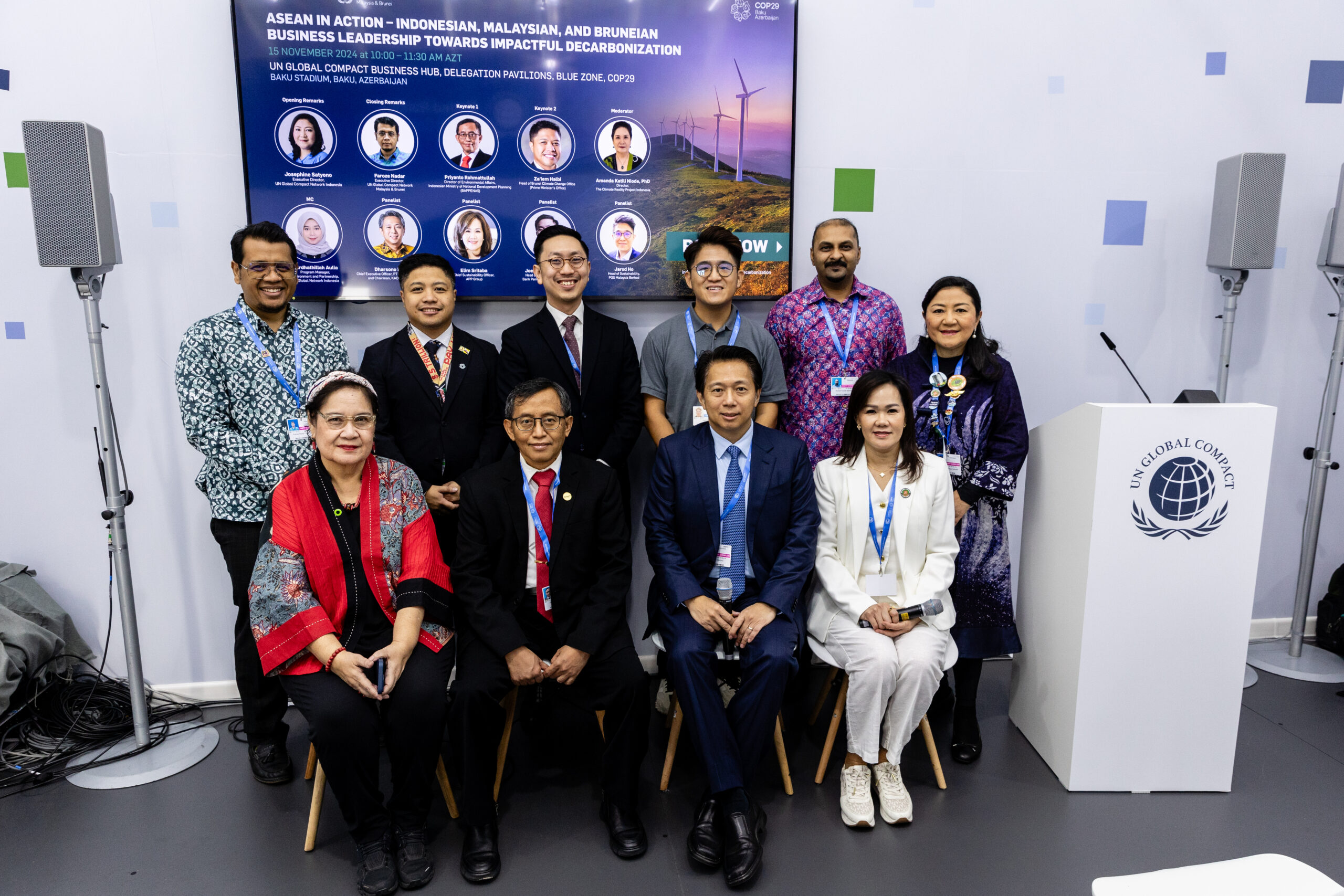The UN Global Compact’s Target Gender Equality initiative is providing companies with the opportunity to deepen implementation of the Women’s Empowerment Principles and strengthen their contribution to Sustainable Development Goal 5.5, which calls for equal women’s representation, participation, and leadership in business globally. Catalyst is proud to be supporting the Target Gender Equality initiative in our shared desire to accelerate the advancement of women through workplace inclusion. This action planning guide will act as a template to help participating companies map out strategic priorities in furthering progress and making gender equality a reality. It is based on Catalyst’s deep experience of working with
companies globally to implement inclusive workplaces that work for everyone.
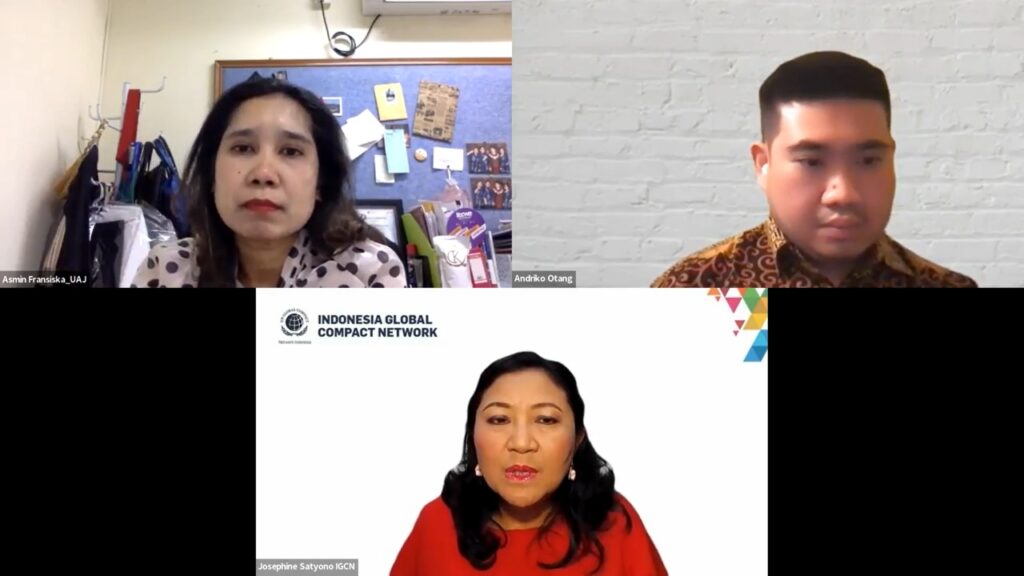
The whole series of TGE Round 3 was facilitated by Dr. iur. Asmin Fransiska, S.H., LL.M., Dean of Faculty of Law and Andriko Sugianto Otang, S.H., M.H., Lecturer of Faculty of Law from Atma Jaya Catholic University
Module 1: Diversity Targets—Defining Ambition, 28 July 2022
Setting diversity targets is not an exact science. The targets you set for your organization will depend on a number of factors that come together to determine what an ambitious but reachable diversity target might look like. This section provided the participants with questions that would help channel their thinking as it relates to the guidelines for target-setting described in the workshop.
“Diversity is part of our day-to-day working life and promoting women in management is a critical factor in our business success.” — Dr. Frank Appel, Chief Executive Officer, Deutsche Post DHL Group
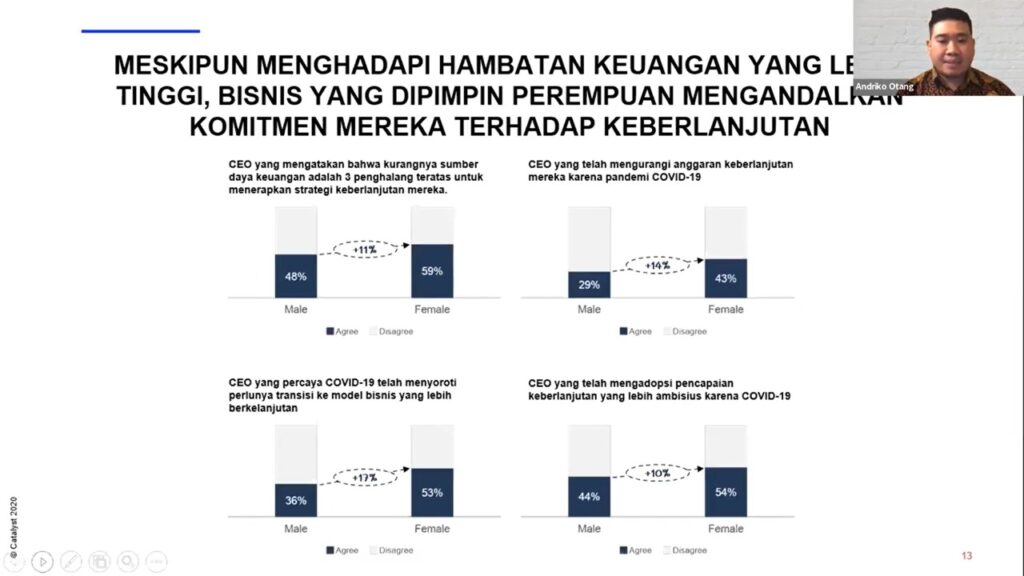
Module 2: Strategies for Success, 3-4 August 2022
There is no one-size-fits-all approach to diversity, equity, and inclusion efforts as determining what actions to implement depends on multiple variables. However, effective diversity, equity, and inclusion (DEI) strategies do share common attributes, including:
• They are supported by senior leadership.
• They are communicated effectively to employees.
• They engage employees widely across the organization.
• They have built-in accountability mechanisms and ways to track progress.
Effective DEI strategies take a holistic approach that ensures organizational programmes and policies are inclusive, remove barriers to advancement for underrepresented groups of employees, and focus on rewarding inclusive behaviors in how employees interact with one another.
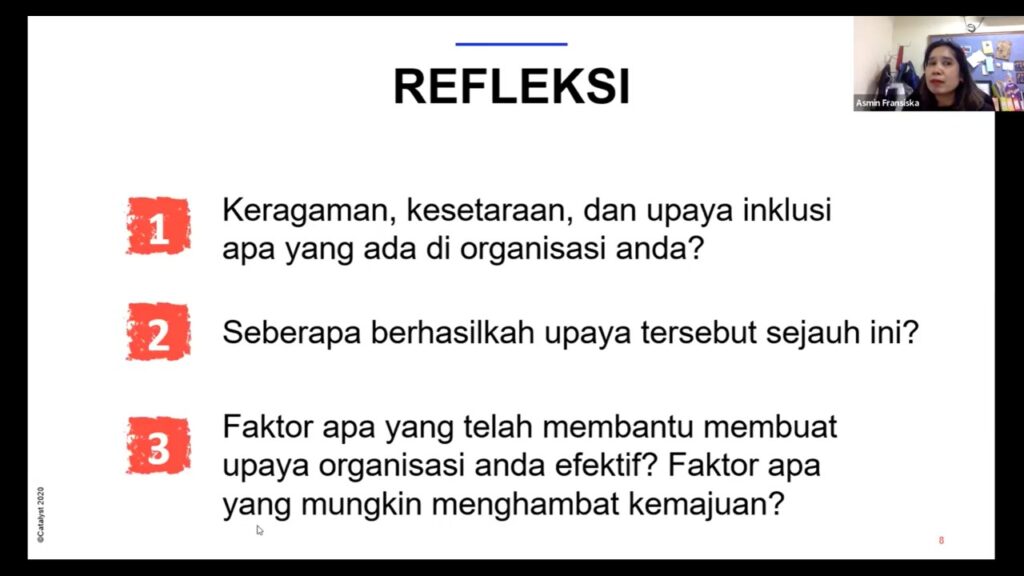
Module 3: Measuring and Communicating Progress, 10-11 August 2022
An organization’s DEI progress can be measured in many ways, especially if there are multiple components involved. One way most organizations measure diversity is through workforce representation. Yet, changes in representation data over time only provide a high-level view of progress and may not show you detailed insights into your workforce.
To better understand which DEI efforts are working—and which are not—it is essential to drill deeper into other change metrics such as hiring, advancement, and turnover data. This information can also be enhanced by measuring the direct impact of specific programs.
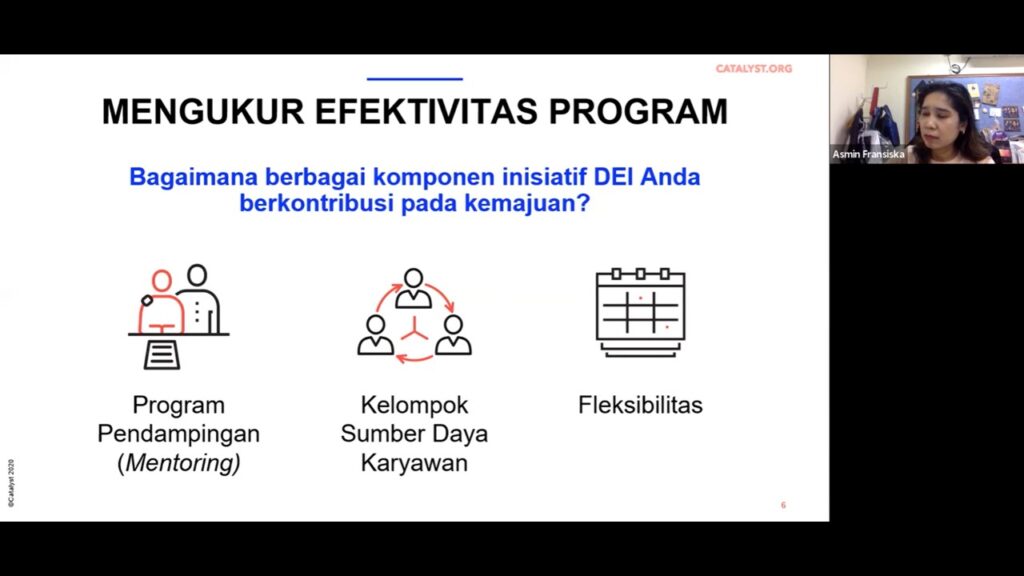
If you are interested to join our TGE Programs, please contact us at deladwita@indonesiagcn.org for more information



